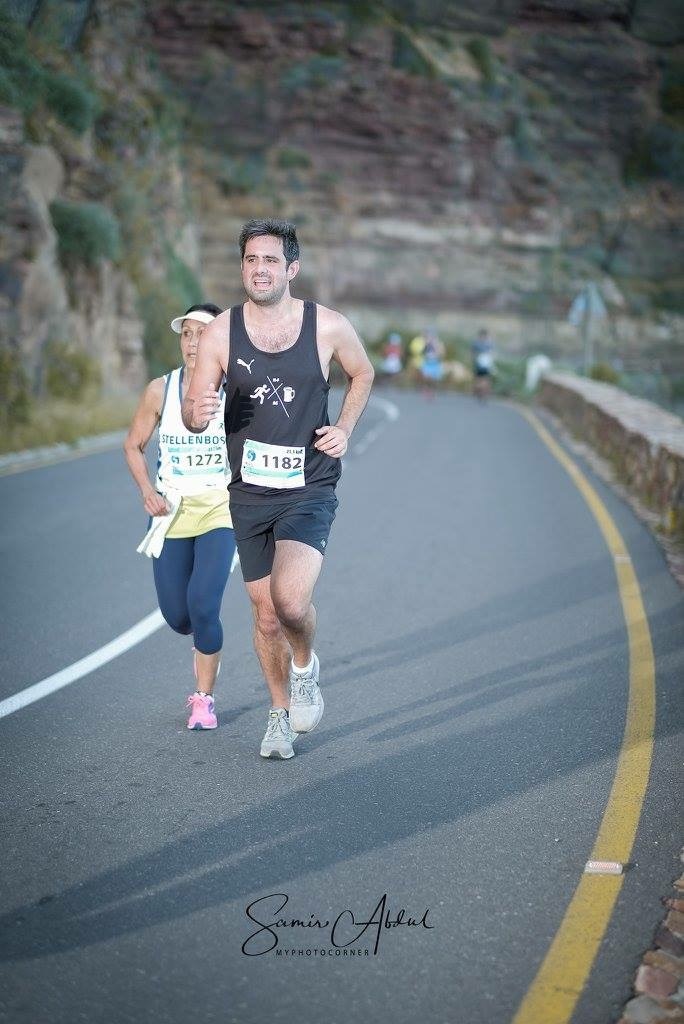
As he trained for his first Comrades Marathon, 10X Investments’ senior investment analyst, Chris Eddy, was struck by the parallels between long-distance running and saving for retirement.
He outlines a few of the similarities.
1. A long, steady game
To finish a marathon like the Comrades you need to be physically and mentally committed.
It’s not the type of thing you can “sort of” do, or “kind of” be part of.
You need to start training in good time and consistently put in the hours, week in and week out, to ensure that you are prepared to endure and complete “The Ultimate Human Race”.
A lack of consistent preparation is a sure-fire way to blow your race, which is normally only evident in the second half of the race as you are not able to maintain your desired pace.
Few people realise that a similar, consistent dedication should be applied to long-term investing. Starting to save too late, or not saving consistently, are two key reasons retirees discover that they do not have enough money to sustain the “pace” of their lifestyle in retirement.
2. It’s further than you think. Get a realistic grasp of the time and distance
90km. Wow. It’s hard to fathom what it would take to run that distance.
It’s also hard to imagine what it will take to pay your bills until you are 90 when you expect to stop working at 60.
Every runner sets out with a goal. Maybe you’re aiming for a Wally Hayward medal, meaning you must complete the race in under six hours.
Perhaps getting your hands on a Bill Rowan, which means completing in under 9 hours, is your dream. Many, many runners, myself included, set their sights on finishing before cut-off, the 12-hour mark.
Once you have your goal in mind, you need to determine what pace you must run to reach that goal. A similar process should apply in investing. Understand how much time you have until you retire, how much you have saved so far, and how much you will need to save each month so that you can pay your bills in retirement.
Thankfully, for runners, there are pacing calculators to help determine the required pace.
For investors, there are retirement calculators to evaluate whether you are on track to reach your retirement goal and, if not, what steps you need to take to get back on track.
3. Slow and steady wins the race
As Aesop’s fable, The Tortoise and the Hare, taught us, you are more likely to be successful by doing things slowly and steadily than by acting quickly and carelessly.
In investing, as in long distance running, you are best served by showing up and putting in steady, consistent effort to ensure that you go the distance.
Having the fastest time over the first 10km means nothing in a race over 90km.
To achieve my goal on Sunday, I need to try to maintain my pace throughout the race.
To maintain my pace, I have to hold back in the early part of the race and not tire myself out early.
In long-term investing, index tracking seldom delivers the best performance over any short period, but has consistently outperformed active fund management over the long-term.
Index tracking, also known as passive investing, is where investors essentially buy a small slice of the total market for a very low cost, rather than paying high fees to fund managers in the hope that they will select winning stocks.
But what if they do select the winning stocks?
The sad reality is that four out of five active funds fail to beat the index (S&P Indices Versus Active scorecard) and the ones that do manage it in one year almost never have the same success the next year.
This video explains it best.
4. The going will probably get tough, don’t be tempted to quit
Training for the Comrades means you are already sacrificing vast amounts of your time.
So when something else pops up – perhaps a work crisis, a sick baby, or even a free holiday – it may seem like giving up on the race is the best plan.
Similarly, investing requires you to sacrifice money you could be spending on a new car, a holiday or something for the kids.
When something unexpected happens, such as a burst geyser or retrenchment, it may seem like cashing out your savings or pausing your debit order is the best option. It’s not.
Read: Staying the distance even when the road gets bumpy
Losing momentum on your training or your savings for even a few months can radically impact the outcome.
The longer you leave your money invested, the more it will grow.
If you take a break, you lose not only the savings you would invested but the growth on those savings and the growth on that growth.
5. Be smart about who you take advice from
Many people can’t help but give advice, often unsolicited.
Maybe your aunt ran a half-marathon 10 years ago, and now insists you follow her cabbage soup diet. Maybe your cousin is telling you to put all your retirement savings into Bitcoin. (The cabbage soup diet would probably serve you better.)
Be careful also of the cost of advice from professionals. With a running coach this will probably be easy to evaluate, a flat fee or an hourly rate perhaps, for the duration of your training.
It is much trickier to work out the cost of financial advice.
It is often a percentage of your total savings every year for the 20, 30 or 40 years it is invested. That cut eats into your growth and can reduce your total savings by a disproportionate amount.
Paying an extra 1% in fees can mean you retire with 30% less money. Learn more about the dark side of compounding and the impact of high fees in this video.
6. Make sure you have support and buy-in from your partner
Reaching your life goals is always easier (and more enjoyable) if you have the support of loved ones. Training for a marathon takes hours out your day and if your partner resents this, everyone is in for a tough time.
Likewise, saving for retirement requires buy-in from all parties.
Whether you have a joint retirement plan or separate plans, there should be shared understanding of responsibilities and expectations.
If one person cashes out their savings when switching jobs, or decides to contribute less money each month, this will damage their partner’s prospects too.
Good luck to everyone running the 2018 Comrades.
•About 10X Investments
In an industry famous for super-sized promises on a large, confusing array of products, most of which disappoint, 10X uses a simple, proven strategy to give individual and institutional investors the best possible chance of reaching their retirement investment goal: invest 15% of your income for 40 years in a high-growth index fund and pay fees of 1% per year or less.
Fees are a valuable tool for predicting future investment performance and the fees on 10X’s retirement annuity are less than half the industry average. Sign up before June 30 and get 6 months fee free. Find out more here.




 Publications
Publications
 Partners
Partners








